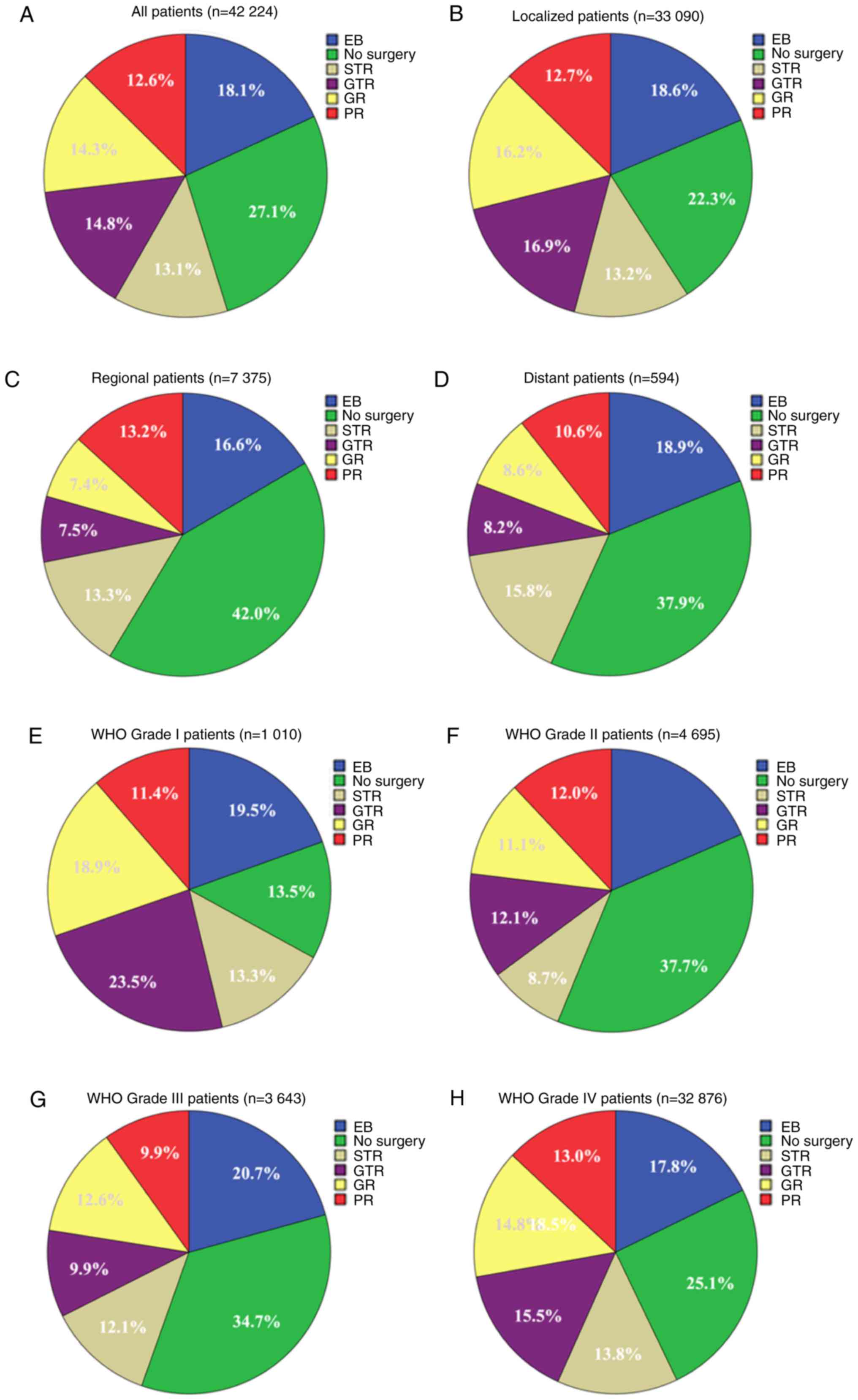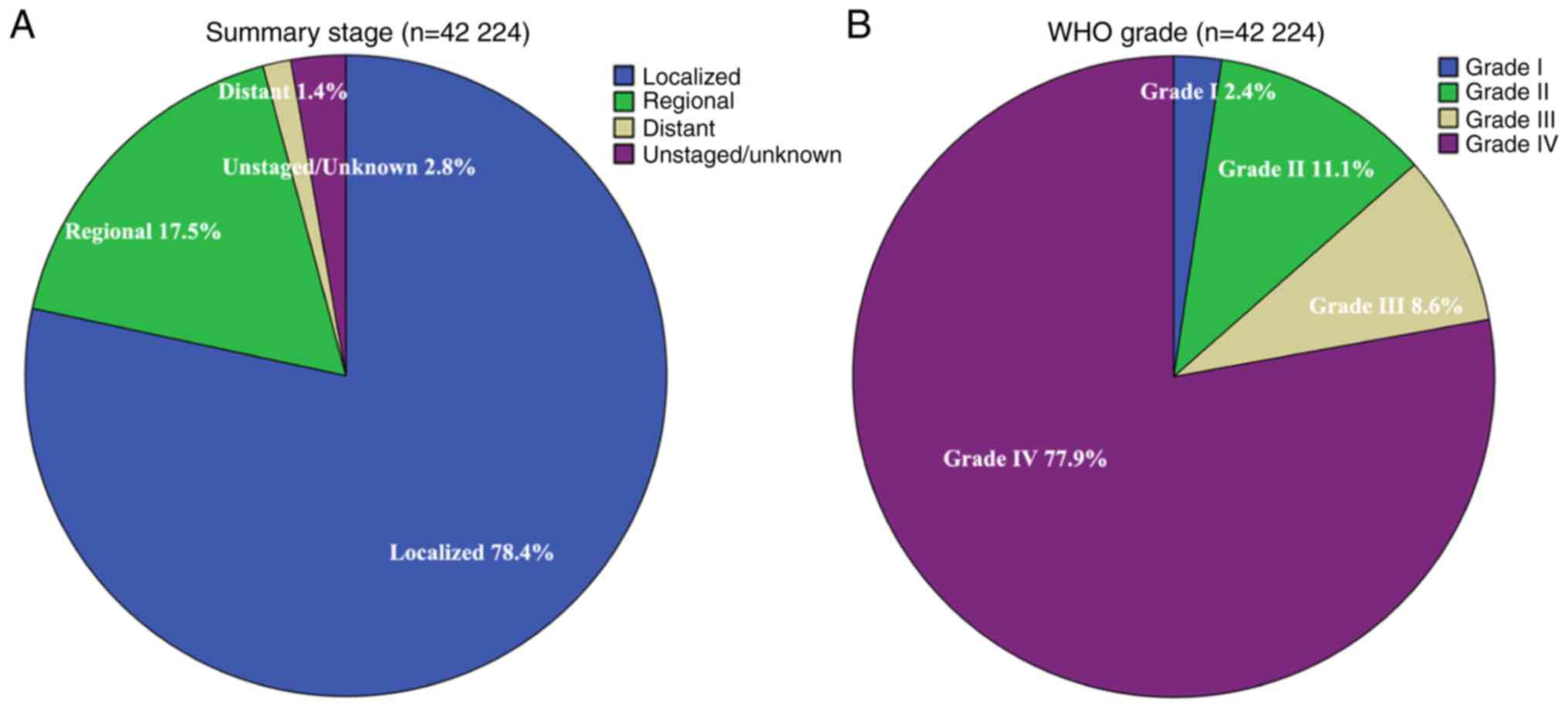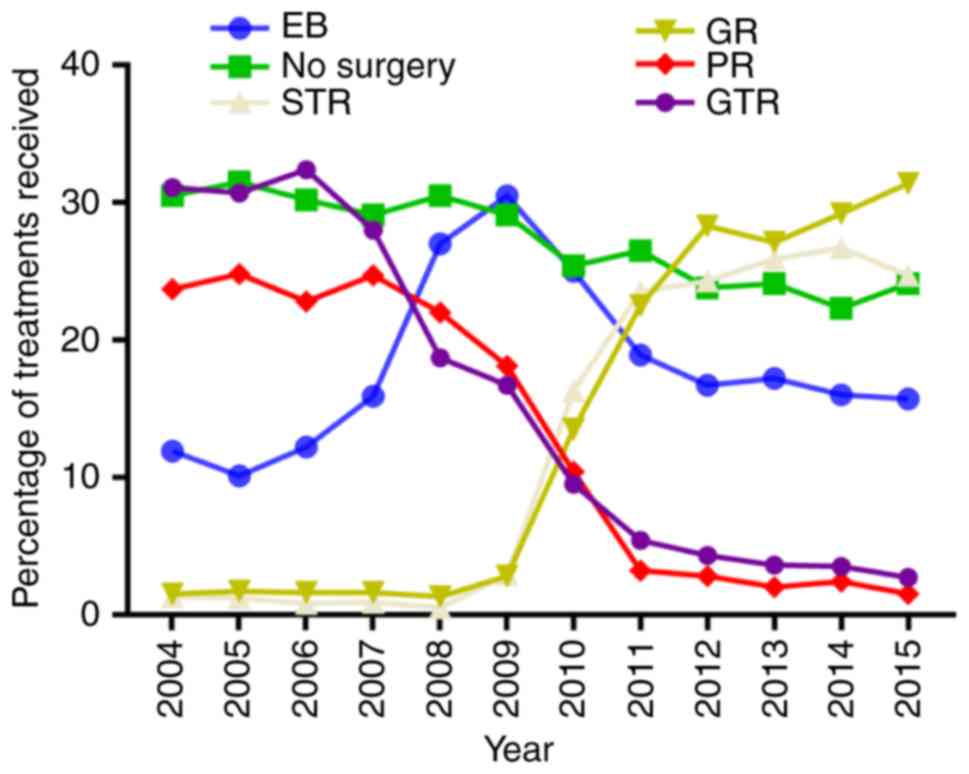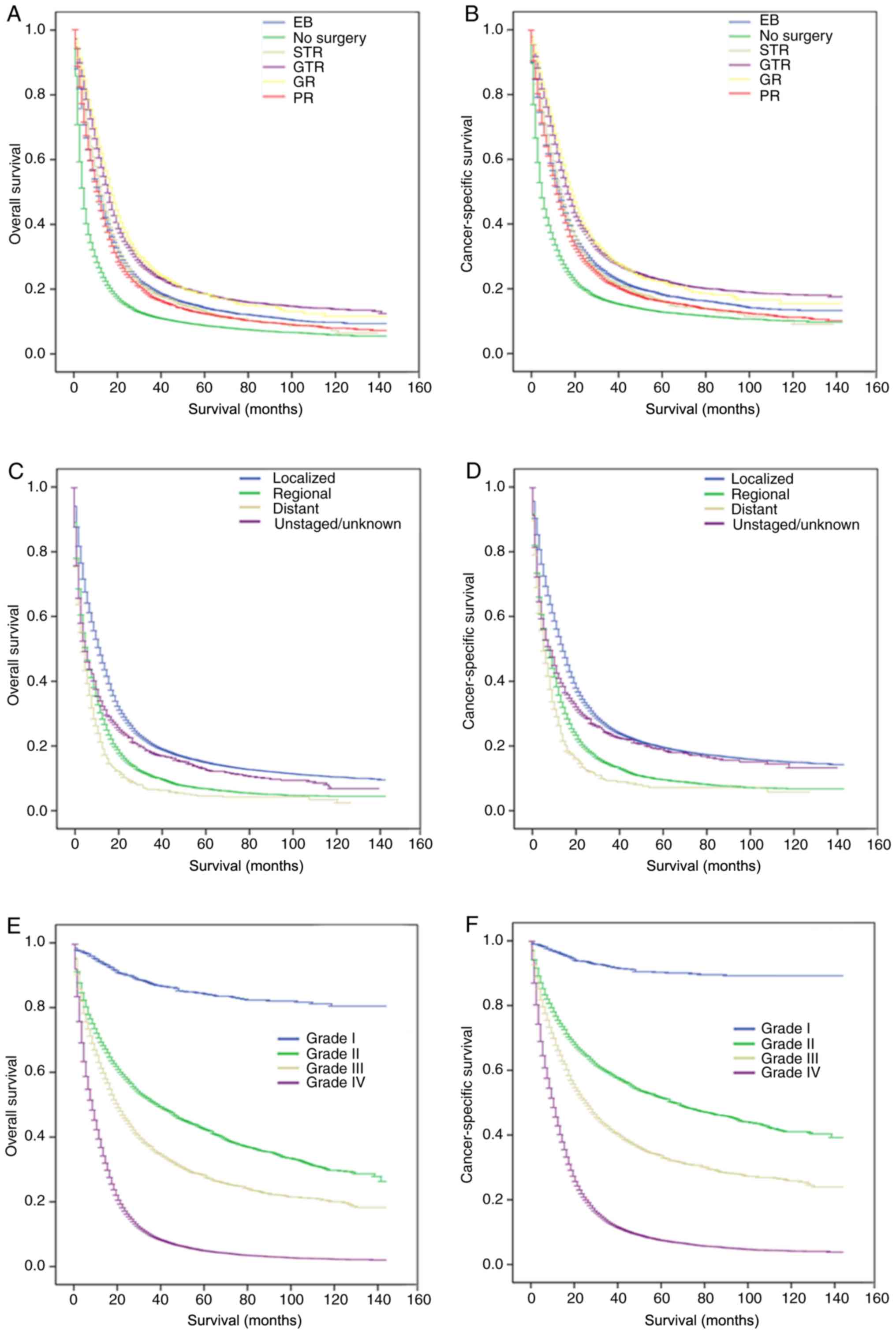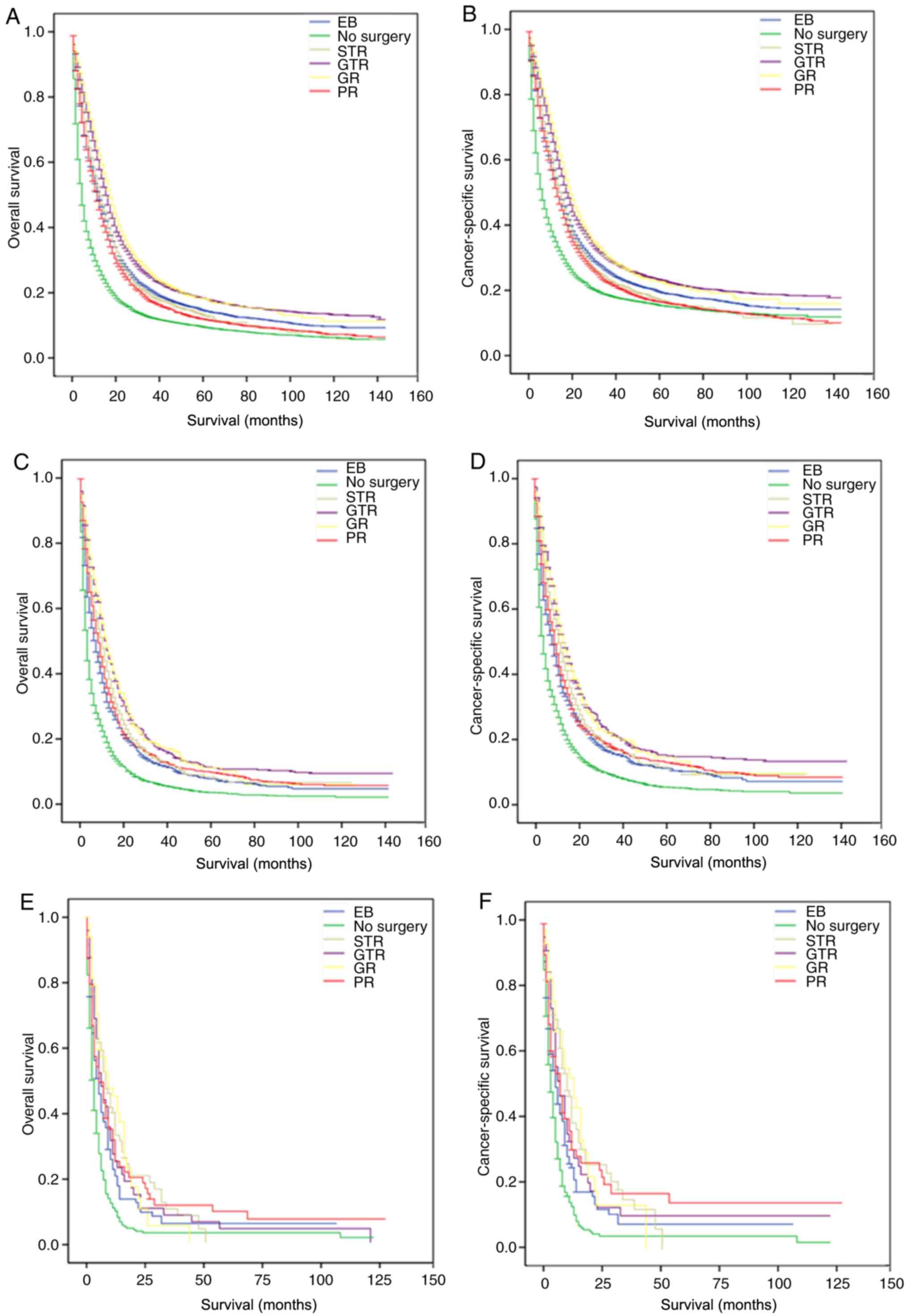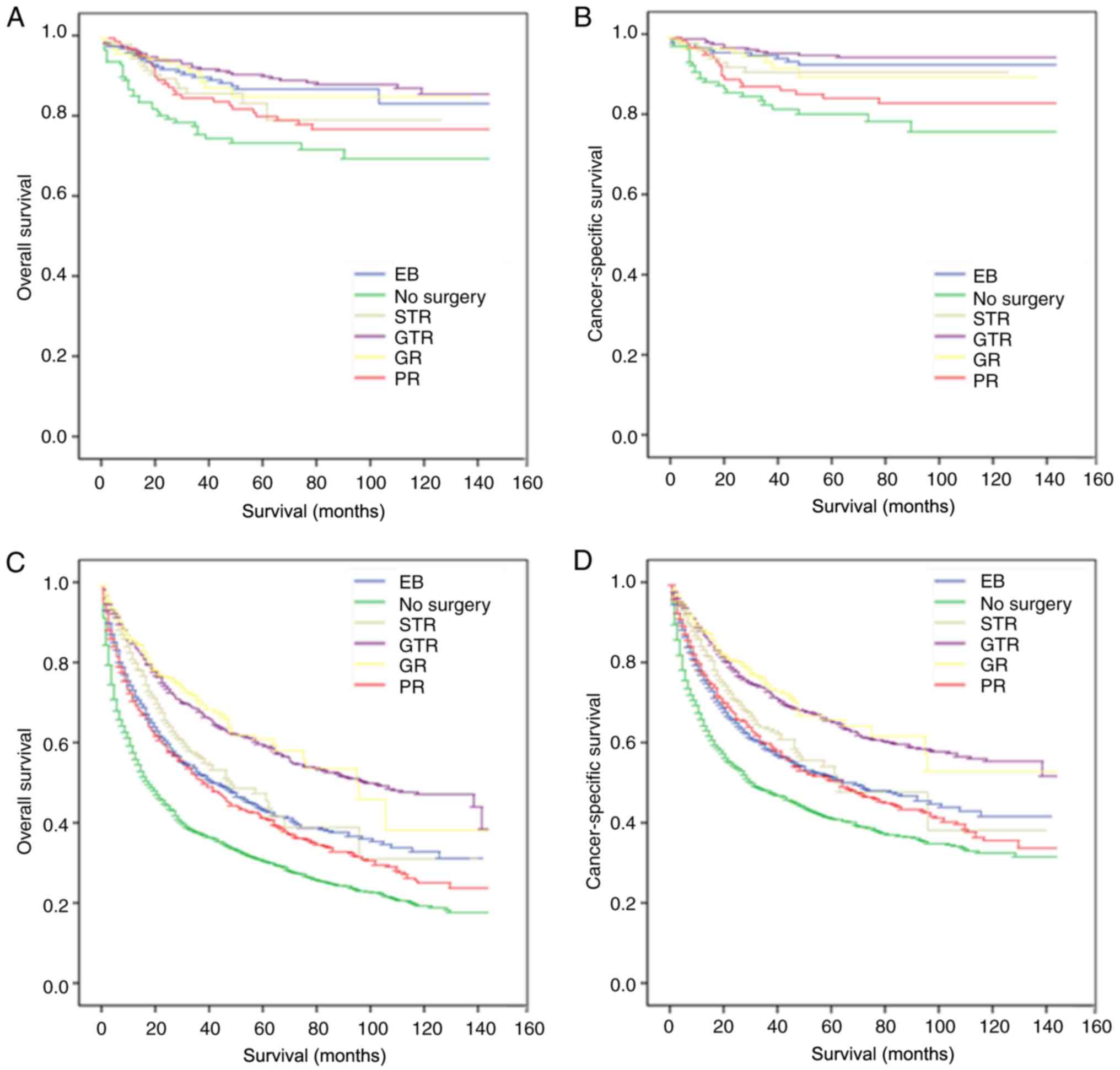|
1
|
Teng YD, Abd-El-Barr M, Wang L, Hajiali H,
Wu L and Zafonte RD: Spinal cord astrocytomas: Progresses in
experimental and clinical investigations for developing recovery
neurobiology-based novel therapies. Exp Neurol. 311:135–147. 2019.
View Article : Google Scholar : PubMed/NCBI
|
|
2
|
Iida T, Tomogane Y, Takagi T, Miyaji Y,
Sakamoto D, Yoshida Y, Ishikura R, Ando K, Nakagomi N, Hirota S and
Yoshimura S: Grading of astrocytomas using the PRESTO (principles
of echo-shifting with a train of observations) magnetic resonance
imaging sequence. Clin Neurol Neurosurg. 173:91–95. 2018.
View Article : Google Scholar : PubMed/NCBI
|
|
3
|
Xie JC, Yang S, Liu XY and Zhao YX:
Marital status is associated with survival of patients with
astrocytoma. J Clin Neurosci. 56:79–87. 2018. View Article : Google Scholar : PubMed/NCBI
|
|
4
|
Wen PY and Kesari S: Malignant gliomas in
adults. N Engl J Med. 359:492–507. 2008. View Article : Google Scholar : PubMed/NCBI
|
|
5
|
Ostrom QT, Cioffi G, Gittleman H, Patil N,
Waite K, Kruchko C and Barnholtz-Sloan JS: CBTRUS statistical
report: Primary brain and other central nervous system tumors
diagnosed in the United States in 2012–2016. Neuro Oncol. 21 (Suppl
5):v1–v100. 2019. View Article : Google Scholar : PubMed/NCBI
|
|
6
|
Walker DG and Kaye AH: Diagnosis and
management of astrocytomas, oligodendrogliomas and mixed gliomas: A
review. Australas Radiol. 45:472–482. 2001. View Article : Google Scholar : PubMed/NCBI
|
|
7
|
Donofrio CA, Gagliardi F, Callea M, da
Passano CF, Terreni MR, Cavalli A, Spina A, Acerno S, Bailo M,
Elbabaa SK and Mortini P: Pediatric cerebellar pilocytic
astrocytoma presenting with spontaneous intratumoral hemorrhage.
Neurosurg Rev. 2018.(Epub ahead of print). PubMed/NCBI
|
|
8
|
Louis DN, Perry A, Reifenberger G, von
Deimling A, Figarella-Branger D, Cavenee WK, Ohgaki H, Wiestler OD,
Kleihues P and Ellison DW: The 2016 world health organization
classification of tumors of the central nervous system: A summary.
Acta Neuropathol. 131:803–820. 2016. View Article : Google Scholar : PubMed/NCBI
|
|
9
|
Weidmann MJ: Neurosurgery. Med J Aust.
161:392–394. 1994. View Article : Google Scholar : PubMed/NCBI
|
|
10
|
Tavares CB, Gomes-Braga FDCS, Sousa EB,
Borges US, Escórcio-Dourado CS, Silva-Sampaio JPD and Silva BBD:
Evaluation of estrogen receptor expression in low-grade and
high-grade astrocytomas. Rev Assoc Med Bras (1992). 64:1129–1133.
2018. View Article : Google Scholar : PubMed/NCBI
|
|
11
|
Guastella AR, Michelhaugh SK, Klinger NV,
Fadel HA, Kiousis S, Ali-Fehmi R, Kupsky WJ, Juhász C and Mittal S:
Investigation of the aryl hydrocarbon receptor and the intrinsic
tumoral component of the kynurenine pathway of tryptophan
metabolism in primary brain tumors. J Neurooncol. 139:239–249.
2018. View Article : Google Scholar : PubMed/NCBI
|
|
12
|
Delgado-Lopez PD, Corrales-Garcia EM,
Martino J, Lastra-Aras E and Duenas-Polo MT: Diffuse low-grade
glioma: A review on the new molecular classification, natural
history and current management strategies. Clin Transl Oncol.
19:931–944. 2017. View Article : Google Scholar : PubMed/NCBI
|
|
13
|
Patel S, DiBiase S, Meisenberg B, Flannery
T, Patel A, Dhople A, Cheston S and Amin P: Phase I clinical trial
assessing temozolomide and tamoxifen with concomitant radiotherapy
for treatment of high-grade glioma. Int J Radiat Oncol Biol Phys.
82:739–742. 2012. View Article : Google Scholar : PubMed/NCBI
|
|
14
|
Ghotme KA, Barreto GE, Echeverria V,
Gonzalez J, Bustos RH, Sanchez M, Leszek J, Yarla NS, Gomez RM,
Tarasov VV, et al: Gliomas: New perspectives in diagnosis,
treatment and prognosis. Curr Top Med Chem. 17:1438–1447. 2017.
View Article : Google Scholar : PubMed/NCBI
|
|
15
|
Mao W, Huang X, Kong M, Fan J and Geng J:
More lymph node dissection improves survival in patients with newly
diagnosed lymph node-positive penile cancer. Int Urol Nephrol.
51:641–654. 2019. View Article : Google Scholar : PubMed/NCBI
|
|
16
|
Mao W, Kong M, Yu H, Wang D, Huang X, Yao
X, Fan J and Geng J: Prognosis and treatment differences between
initial and second primary chondrosarcoma. Oncol Lett. 18:207–218.
2019.PubMed/NCBI
|
|
17
|
Alattar AA, Brandel MG, Hirshman BR, Dong
X, Carroll KT, Ali MA, Carter BS and Chen CC: Oligodendroglioma
resection: A surveillance, epidemiology, and end results (SEER)
analysis. J Neurosurg. 128:1076–1083. 2018. View Article : Google Scholar : PubMed/NCBI
|
|
18
|
Dong X, Noorbakhsh A, Hirshman BR, Zhou T,
Tang JA, Chang DC, Carter BS and Chen CC: Survival trends of grade
I, II, and III astrocytoma patients and associated clinical
practice patterns between 1999 and 2010: A SEER-based analysis.
Neurooncol Pract. 3:29–38. 2016.PubMed/NCBI
|
|
19
|
Karajannis M, Allen JC and Newcomb EW:
Treatment of pediatric brain tumors. J Cell Physiol. 217:584–589.
2008. View Article : Google Scholar : PubMed/NCBI
|
|
20
|
Johnson DR, Brown PD, Galanis E and
Hammack JE: Pilocytic astrocytoma survival in adults: Analysis of
the surveillance, epidemiology, and end results program of the
national cancer institute. J Neurooncol. 108:187–193. 2012.
View Article : Google Scholar : PubMed/NCBI
|
|
21
|
Keles GE, Chang EF, Lamborn KR, Tihan T,
Chang CJ, Chang SM and Berger MS: Volumetric extent of resection
and residual contrast enhancement on initial surgery as predictors
of outcome in adult patients with hemispheric anaplastic
astrocytoma. J Neurosurg. 105:34–40. 2006. View Article : Google Scholar : PubMed/NCBI
|
|
22
|
Smith JS, Chang EF, Lamborn KR, Chang SM,
Prados MD, Cha S, Tihan T, Vandenberg S, McDermott MW and Berger
MS: Role of extent of resection in the long-term outcome of
low-grade hemispheric gliomas. J Clin Oncol. 26:1338–1345. 2008.
View Article : Google Scholar : PubMed/NCBI
|
|
23
|
McGirt MJ, Chaichana KL, Attenello FJ,
Weingart JD, Than K, Burger PC, Olivi A, Brem H and
Quinoñes-Hinojosa A: Extent of surgical resection is independently
associated with survival in patients with hemispheric infiltrating
low-grade gliomas. Neurosurgery. 63:700–707. 2008. View Article : Google Scholar : PubMed/NCBI
|
|
24
|
Fouladi M, Jenkins J, Burger P, Langston
J, Merchant T, Heideman R, Thompson S, Sanford A, Kun L and Gajjar
A: Pleomorphic xanthoastrocytoma: Favorable outcome after complete
surgical resection. Neuro Oncol. 3:184–192. 2001. View Article : Google Scholar : PubMed/NCBI
|
|
25
|
Lacroix M, Abi-Said D, Fourney DR,
Gokaslan ZL, Shi W, DeMonte F, Lang FF, McCutcheon IE, Hassenbusch
SJ, Holland E, et al: A multivariate analysis of 416 patients with
glioblastoma multiforme: Prognosis, extent of resection, and
survival. J Neurosurg. 95:190–198. 2001. View Article : Google Scholar : PubMed/NCBI
|
|
26
|
Sanai N and Berger MS: Glioma extent of
resection and its impact on patient outcome. Neurosurgery.
62:753–764; discussion 264–756. 2008. View Article : Google Scholar : PubMed/NCBI
|
|
27
|
Li YM, Suki D, Hess K and Sawaya R: The
influence of maximum safe resection of glioblastoma on survival in
1229 patients: Can we do better than gross-total resection? J
Neurosurg. 124:977–988. 2016. View Article : Google Scholar : PubMed/NCBI
|
|
28
|
Freeman CR and Suissa S: Brain stem tumors
in children: Results of a survey of 62 patients treated with
radiotherapy. Int J Radiat Oncol Biol Phys. 12:1823–1828. 1986.
View Article : Google Scholar : PubMed/NCBI
|
|
29
|
Grigsby PW, Thomas PR, Schwartz HG and
Fineberg BB: Multivariate analysis of prognostic factors in
pediatric and adult thalamic and brainstem tumors. Int J Radiat
Oncol Biol Phys. 16:649–655. 1989. View Article : Google Scholar : PubMed/NCBI
|
|
30
|
Minehan KJ, Brown PD, Scheithauer BW,
Krauss WE and Wright MP: Prognosis and treatment of spinal cord
astrocytoma. Int J Radiat Oncol Biol Phys. 73:727–733. 2009.
View Article : Google Scholar : PubMed/NCBI
|
|
31
|
Hongo H, Takai K, Komori T and Taniguchi
M: Intramedullary spinal cord ependymoma and astrocytoma:
Intraoperative frozen-section diagnosis, extent of resection, and
outcomes. J Neurosurg Spine. 30:133–139. 2019. View Article : Google Scholar
|















